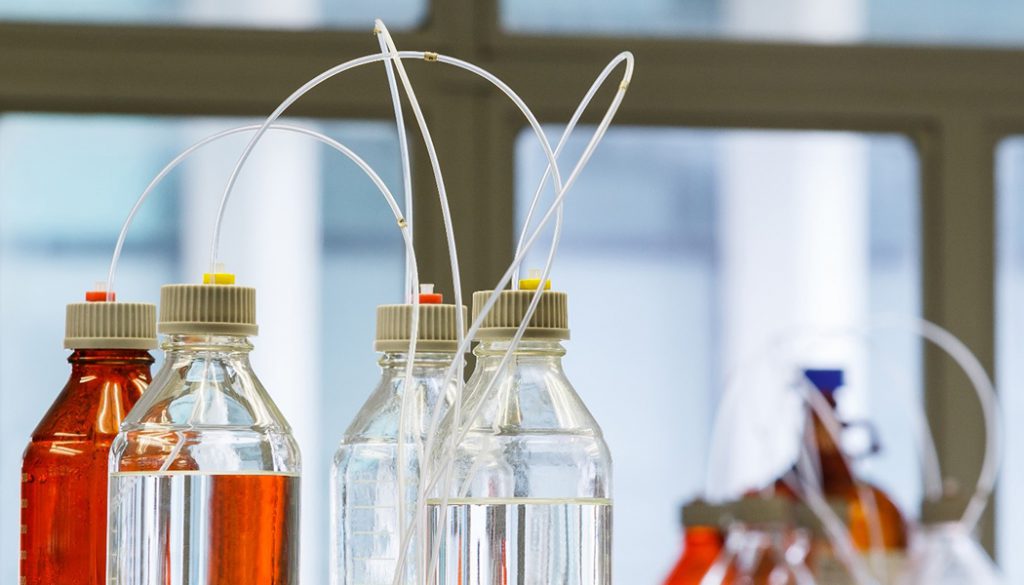An Analytical Tool Like Few Others
When he passed away in April 2004, Dr. Csaba Horváth had more than a few laurels upon which he could eternally rest. Though most famously, Horváth was the first scientist to design, construct and show molecular separations using high-performance liquid chromatography (HPLC). The analytical technology has since served as foundation of a billion-dollar industry and led to many discoveries in the fields of medicine, biochemistry and biology.
Used to separate and analyze proteins and nucleic acids, HPLC is an indispensable tool in the pharmaceutical industry for analysis and purification of molecules. By being able to identify individual components of drug ingredients, scientists and manufacturers can screen and filter out impurities.
HPLC comes under the umbrella term of chromatography. Before Horváth, however, the leading chromatographic technique faced severe constraints as to its scope of application, as it functioned only with relatively volatile and stable molecules. “Involatile” or fragile molecules (ones that can be damaged by, say, heat) form the majority of organic and biological molecules, but could not be analyzed via such an early investigative processes.
While the idea of chromatography which could be better applied to fragile molecules had been around since at least 1941, it was Horváth who, in the early 1960s, laid the foundations for a real-world practice: HPLC.
“Within two years, he developed a new system consisting of a high-pressure pump, a new type of injector, a narrow-bore column and a UV detector with a small-volume cell—i.e., the first modern liquid chromatograph,” remembered Leslie Ettre, a research affiliate at Yale. “Without question, this work represented the beginning of HPLC; in fact, most of the terms used universally today, such as HPLC, isocratic elution, or pellicular packing originated from (Horváth).”
As HPLC technology advanced, environmental monitoring, pharmaceutical quality control, medical diagnosis and drug discovery took vast leaps forward. Crime scene investigators use it in their analyses, while industrial chemists rely on the process to determine the composition of petroleum. Food quality inspectors use it to monitor pesticide and additive levels in food. The technology snowballed across industries so quickly (and continues to do so) that Horváth picked up the moniker of “Mr. HPLC.”
The National Foundation for Cancer Research also saw the promise in HPLC, and was quick to ensure Horvath and his lab could continue their work unabated—funding them from 1984 to 2000.
“The efficient of purification methods and sensitive analytical techniques…contributes to further progress in life sciences and medicine,” Horvath noted in a 1995 progress report. “We are indebted to the NFCR for supporting our studies on the fundamental aspect of certain pertinent separation processes.”
Research in refining HPLC continues in labs across the globe, and it may only be a matter of time that chromatography finds new applications in new industries.
References:
- Arnaud, Celia Henry. (2016). 50 years of HPLC. Retrieved from: https://cen.acs.org/content/cen/articles/94/i24/50-years-HPLC.html
- Buie, John. (2010). Evolution Of HPLC Systems. Retrieved from: https://www.labmanager.com/lab-product/2010/06/evolution-of-hplc-systems#.XD-YyS2ZN0s
- Flavell-While, Claudia. (2018). Csaba Horváth – Degrees of Separation. Retrieved from: https://www.thechemicalengineer.com/features/cewctw-csaba-horváth-degrees-of-separation/
- Peart, Karen. (2004). In Memoriam: Pioneering Leader Who Developed Widely Used Tools of Chemical Analysis, Csaba Horváth. Retrieved from: https://news.yale.edu/2004/04/19/memoriam-pioneering-leader-who-developed-widely-used-tools-chemical-analysis-csaba-horv-0












